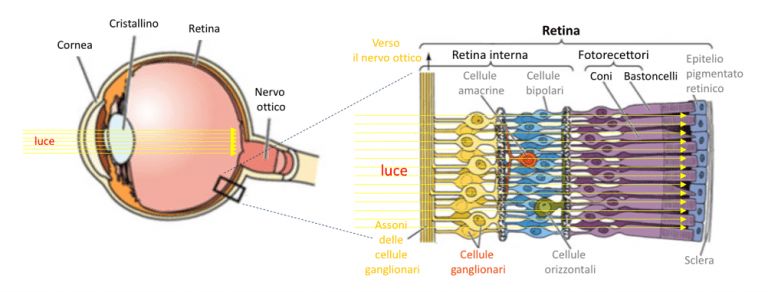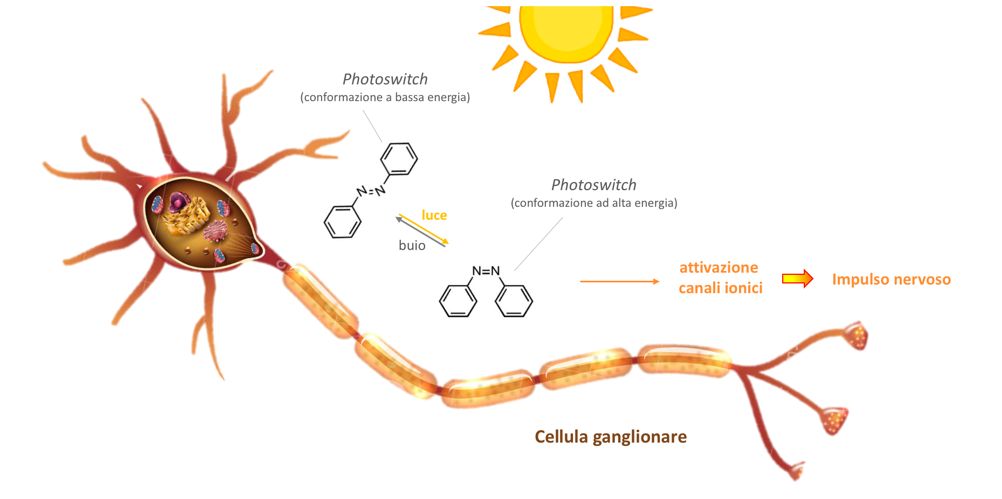The response of photoreceptors to the light stimulus is the key event that makes the phenomenon of vision possible. The neurons of the internal retina, such as the ganglion cells, are able to propagate the nerve impulse generated by the photoreceptors but not to produce it autonomously, therefore the phenomenon of vision can only take place if the photoreceptors are present, intact and properly functioning. The physical or functional loss of photoreceptors can be attributable to various causes, such as trauma, retinal detachment, degenerative retinal disease.
Among the degenerative diseases of the retina we cannot fail to include age-related macular degeneration (AMD or AMD, from the English Age-related Macular Degeneration), which alone has generated millions of cases of low vision and legal blindness, becoming the main cause loss of central vision in the elderly population of the industrialized world. The growing need for a therapeutic response has led to a strong acceleration of ophthalmological research and, where possible, to the design of new therapeutic strategies aimed at making acquired blindness reversible. Among the most innovative and worthy of attention therapeutic strategies there is certainly optopharmacology, which involves the use of molecules capable of making the ganglion cells of the internal retina photosensitive. These molecules, called photoswitches, have a molecular structure capable of absorbing the energy of light and passing from a low energy conformation to a high energy conformation; the passage between the two molecular conformations determines the activation or deactivation of specific ion channels present in the plasma membrane of the ganglion cells and consequently the triggering, by these cells, of an action potential that results in a stimulus nerve that propagates, similarly to when it happens in the presence of photoreceptors, towards the optic nerve and then up to the brain.
In summary, the optopharmacology makes cells that are naturally not photosensitive, allowing to restore the phenomenon of vision that is lacking when the photoreceptors undergo degeneration.
There are several types of photoswitches, each operating at specific wavelength ranges, and researchers aim to create new ones that respond to wavelengths and light intensities that are as compatible as possible with patients' eye health.
Optopharmacology involves the administration of photoswitches directly into the eye by intravitreal injection. Preclinical research has already yielded encouraging results on several animal experimental models. The application in humans still presents some critical issues concerning the limited effectiveness in time and the narrowness of the fields of action of the photoswitches in terms of wavelengths, but the good results obtained so far and the commitment put into play by excellent research groups at the forefront of the sector give good hope that the new technology will enter the human clinical trial phase as soon as possible and soon represent a further concrete weapon in the fight against blindness.



